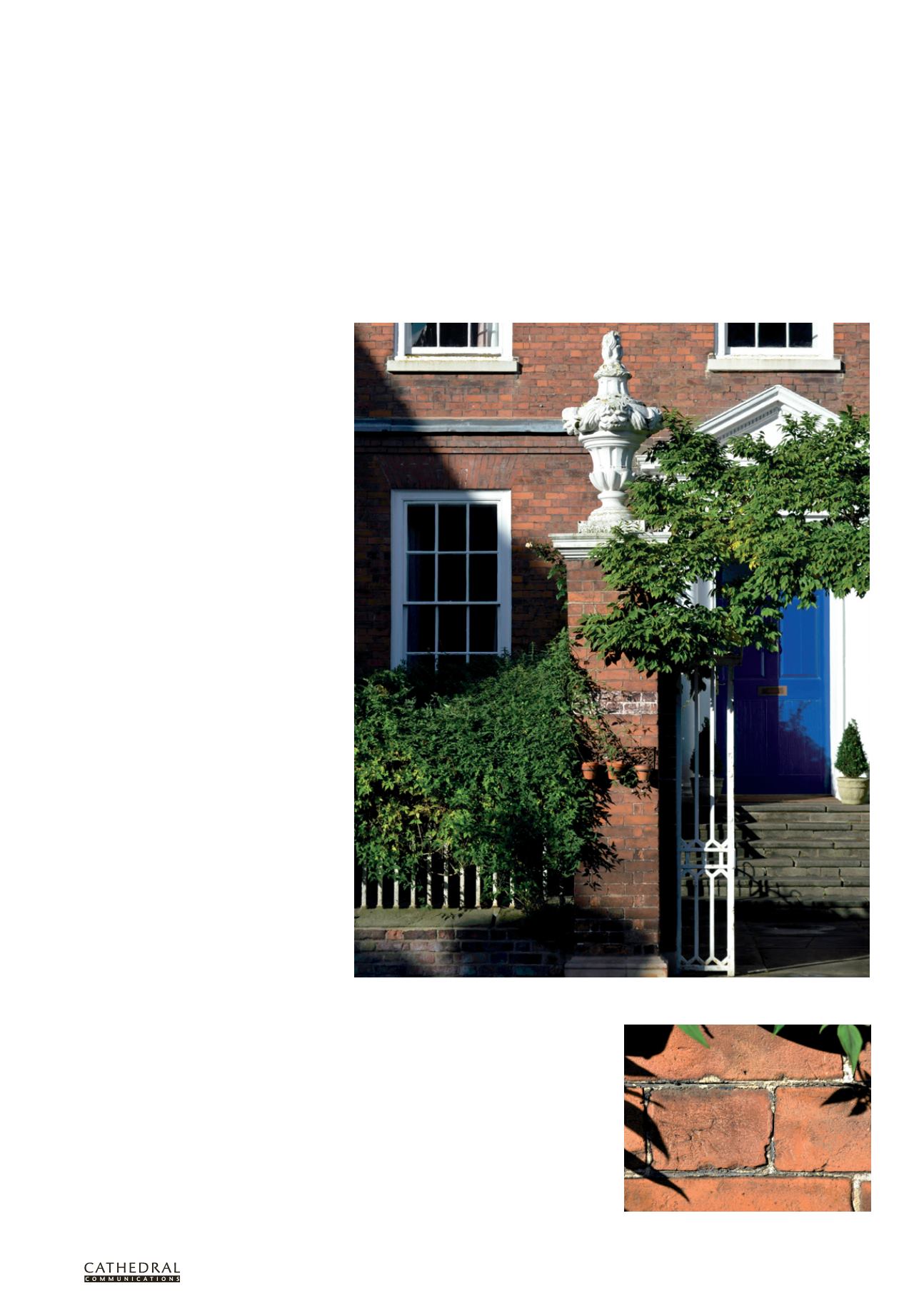

T W E N T Y T H I R D E D I T I O N
T H E B U I L D I N G C O N S E R VAT I O N D I R E C T O R Y 2 0 1 6
9 5
3.2
STRUCTURE & FABR I C :
MASONRY
JOINT FINISHES ON
HISTORIC BRICKWORK
GERARD LYNCH
T
HE FINISHING
treatments found on
the mortar joints of historic brickwork
reflect skills and traditions developed
over many centuries. Joints can account
for 15 to 30 per cent of the façade so when
skilfully executed they make an important
contribution to the overall aesthetics of
the finished brickwork. Understanding the
original appearance of brickwork is therefore
essential to its appropriate conservation.
Both the mortar and the joints’ surface
finish affect the brickwork in several ways.
The colour and tone of the mortar lightens or
darkens the overall brick facade. How joints
are profiled affects how light is caught and
reflected: recessing or angling the profile
creates shadows in sunlight, emphasising the
texture, whereas a subtle profile can obscure
the impact of the bricks allowing them to
merge into a homogenous surface.
Historically, when bricks were less
uniform in colour and regular in shape,
the joint finishes could be designed to add
accuracy and repose to premier facades by
creating the illusion of accuracy. This
trompe
l’oeil
effect relied on finishes to create a grid
on the centres of the beds (the horizontal
joints) and perpends (perpendicular joints),
using either fine grooves, pencilled (painted)
lines or precisely trimmed narrow ribbons of
fine mortar.
JOINTING
The finished profile of the original mortar
joint may be formed either immediately,
as the bricks are laid, or later in a separate
exercise known as pointing. Jointing is the
bricklayer’s term for the action of finishing
the joint faces of the bedding mortar as
work proceeds. It is the oldest method
for finishing brickwork and was mainly
executed using trowels until the early 17th
century when jointing tools increasingly
became standard. It continued to be used
for ordinary work and with the decline
in craft traditions after the first world
war, jointing predominated once again.
Advantages
• unified joint
• uniformity of joint in strength and colour,
provided mortar is accurately gauged
• reduced labour costs
Disadvantages
• less quality control of joint finish
(not all bricklayers joint well)
• difficulty in maintaining uniform
colour throughout the wall face.
POINTING
Pointing is the craft term used to define
the application of a separate and frequently
superior mortar onto the bedding matrix
which is then skilfully brought to the desired
finish. As lime mortars used in domestic
brickwork were slow-setting, the pointing
mortar was applied quite thinly to the still
soft bedding mortar, setting as a unified
compound joint. Pointing was reserved for
premier facades from the 17th century and
remained a common site practice until the
first world war.
Evidence of the original ‘ruled’ joint finish on a gate pier in Miller’s Green, Gloucester c.1741
















